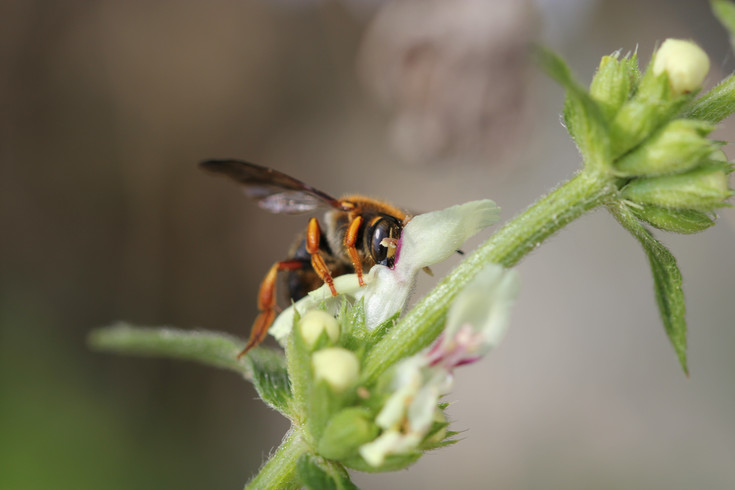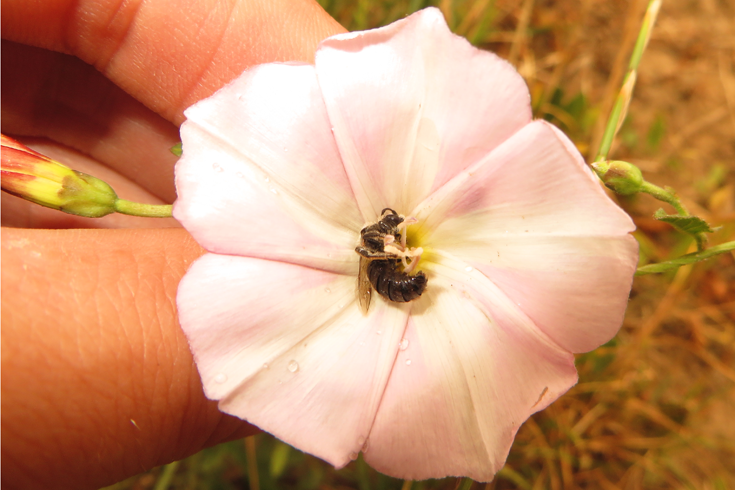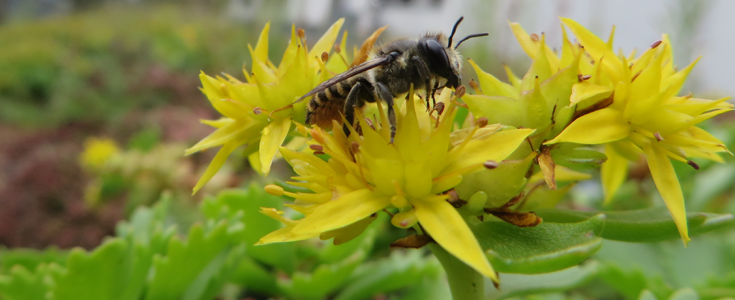My research focus is how anthropogenic activities on different spatial scales affect wild bee diversity, abundance and community composition, as well as their foraging resources and nesting habitats. Studies are carried out in agro-ecosystems and investigate different agricultural management intensities like soil management, mulching frequencies or organic vs. conventional farming practices. Landscape analysis about the quality, quantity and spatial arrangement of landscape structures are included to assess the habitat quality and -connectivity for wild bees. Additionally, I investigate how different land-use types shape plant – pollinator networks and related ecological traits of bees and flowers (trait matching). Sampling sites are chosen in the field and wild bees are usually sampled by a standardized transect method. Thereby the collection of plant-pollinator interaction data is efficiently possible without increasing the workload too much. To quantify the foraging resources of bees in more detail, pollen samples may be taken from the specimen in the lab and analysed with a light microscope. Depending on the research question, landscape data are either obtained from existing data bases (e.g. CORINE Landcover) or mapped in the field (usually by using CORINE Landcover as baseline).
Further, I study relationships between wild bees and honeybees by assessing overlapping foraging resources in dependence of land-use and seasonal aspects. Julia Lanner is currently working in my project “Initial study for bee ecological spatial planning in Vienna”. The project identifies wild bee diversity hot spots in Vienna using literature data and to relate their community composition using ecological traits with habitat quality and apiary distribution at the landscape scale. We aim to analyse locations with high resource overlap between honeybees and wild bees in Vienna and point out areas were enhancing habitat quality for bees (in terms of foraging resources) is necessary.
Together with my colleagues Lukas Landler and Julia Lanner we now focus on spatial ecology and habitat use of selected wild bee species (bumble bees and carpenter bees) in the national parc Neusiedlersee-Seewinkel (Burgenland, AT) using radio telemetry. Individuals of large bee species (e.g. carpenter bees) are equipped with small active radio tags (Plecotus Solutions GmbH). Receiver stations in the research area continuously log the movement patterns of the specimen, allowing detailed insight in the habitat use of the species and further improve conservation measures. Watch our bee tracking video here.
With my colleague Alexander Bruckner I am investigating relevant nesting site parameters of Lasioglossum marginatum – a ground nesting, eusocial wild bee species. We compare soil parameters (water content, pH, SOM, profile depth, texture..), site parameters (vegetation cover, exposition, slope, floral resource availability) and landscape parameters (different land use types and floral resources) to identify which parameters predominantly affect nest size.






